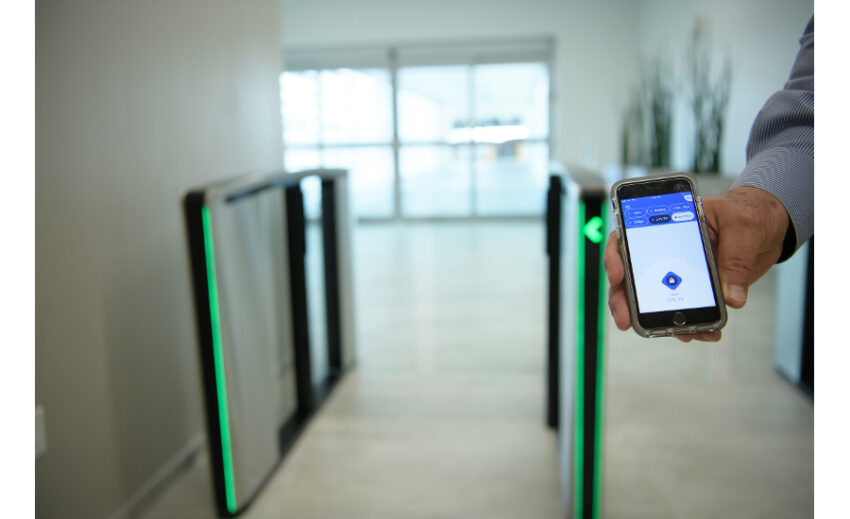In our rapidly evolving digital landscape, businesses are constantly seeking ways to stay ahead, especially when it comes to security. As they pivot towards more integrated and holistic solutions, mobile credential access control has emerged as a beacon, guiding them toward enhanced safety and efficiency.
A Glimpse into the Past: Keycards and Their Limitations
There was a time when keycards, with their magnetic strips or embedded chips, represented the pinnacle of corporate access control. Businesses adopted them to replace traditional lock-and-key mechanisms, lauding their ability to restrict and monitor access. But as the corporate world expanded, with sprawling campuses and multi-site locations, the cracks in the keycard system began to show. Their susceptibility to wear and tear, the ease with which they could be lost or stolen, and the administrative overhead of tracking and managing these cards for vast workforces became increasingly problematic.
The Rise of Mobile Credential Access Control
Capitalizing on the almost universal presence of smartphones in our lives today, mobile access control has ushered in a new era of security. It has artfully combined the personal nature of smartphones with cutting-edge encryption and security protocols. This merger has not only addressed the challenges posed by keycards but has also introduced a multitude of benefits that resonate with the demands of today’s dynamic businesses.
Advantages of Mobile Access Control in Modern Businesses
1. Enhanced Security
Modern mobile credential systems incorporate a multifaceted approach to security, ensuring robust protection at every level. Beyond the standard encryption and biometric features, such as retina scans and voice recognition, these systems also utilize advanced artificial intelligence and machine learning algorithms to detect unusual patterns or potential security breaches. Geo-fencing is another feature often embedded, ensuring access is only granted within specific geographical boundaries. Furthermore, the system’s ability to integrate with other security measures, such as CCTV surveillance and alarm systems, provides a holistic security ecosystem. Regular software updates also ensure that the system is equipped to counter the latest security threats, making it a dynamic and ever-evolving security solution that adapts to the changing landscape of cyber threats.
2. Unparalleled Convenience
Imagine a world where access control seamlessly integrates with your daily life, recognizing routines, and optimizing workflows. Mobile credential access control systems can be programmed to recognize patterns, providing a frictionless access experience, especially for regular routines.
3. Cost-Effectiveness
Beyond the tangible savings from reduced card production, businesses benefit from minimized downtime due to lost or malfunctioning cards, thus ensuring that operations continue smoothly with minimal disruptions.
4. Scalability and Integration
With the digital nature of mobile access control, businesses can effortlessly add new users to the system. Additionally, the systems can integrate with other digital platforms, creating a cohesive operational network that drives efficiency.
5. Real-Time Monitoring and Analytics
In our data-driven age, the analytics provided by these systems are gold mines. They offer insights into peak access times, frequently accessed areas, and even potential bottlenecks, enabling businesses to optimize spaces and workflows.
6. Championing Sustainability
By reducing the need for physical infrastructure and leveraging cloud-based platforms, businesses not only reduce waste but also energy consumption, making a positive impact on the environment.
7. Flexibility and Remote Management
One of the standout features of mobile access control is its inherent flexibility and capability for remote management. With businesses adopting more decentralized models and flexible working hours, the ability to manage access control from anywhere becomes crucial. Whether it’s granting temporary access to a visiting consultant, revoking access due to security concerns, or making real-time adjustments to access permissions during emergencies, the system can be managed remotely with just a few clicks. This not only ensures that businesses can respond swiftly to changing circumstances but also empowers administrators with tools that are adaptable to various scenarios, further enhancing the overall security framework.
Conclusion
In summary, the shift from keycards to mobile credential access control is a manifestation of the broader digital transformation sweeping across industries. It symbolizes a move towards greater efficiency, security, and sustainability. As businesses navigate the challenges and opportunities of the 21st century, embracing innovative solutions like mobile access control will be paramount. It not only ensures they remain secure but also positions them as forward-thinking leaders in a world where technology and innovation are invaluable currencies.
For a comprehensive understanding, businesses should consult with security experts and explore pilot implementations before a complete transition to mobile access control systems.


